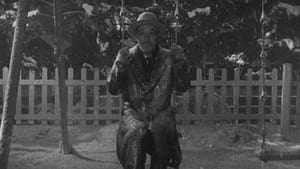Contact: info@alwanfilm.com
Video Sources 0 Views
- Watch trailer
- Ikiru


Ikiru 1952 Colorized
Synopsis
Table of Contents
ToggleReview: Ikiru 1952 Colorized – A Poignant Tale of Life and Redemption

Introduction
Released in 1952, Ikiru is a cinematic masterpiece directed by the legendary Akira Kurosawa. This Japanese drama explores the existential journey of a terminally ill bureaucrat as he seeks meaning and redemption in the twilight of his life. In this review, we delve into the emotional depth of Ikiru and discuss the impact of its early colorized version on its timeless narrative.
Check The Full Colorized Movies List
Check Our Colorized Movies Trailer Channel
Understanding Ikiru 1952 Colorized: Director, Cast, and Genre
Directed by Akira Kurosawa, Ikiru features Takashi Shimura in a tour de force performance as Kanji Watanabe, a middle-aged bureaucrat who discovers he has terminal cancer. As Watanabe grapples with the devastating news, he embarks on a soul-searching journey to find purpose and meaning in his remaining days. Kurosawa’s poignant exploration of life and mortality transcends genres, making Ikiru a timeless classic that resonates with audiences across generations.
Exploring the World of Ikiru 1952 Colorized: Plot and Characters
Ikiru follows the poignant story of Kanji Watanabe, a weary bureaucrat who has spent his life navigating the bureaucratic maze of post-war Japan. Upon learning of his terminal illness, Watanabe embarks on a quest to find meaning in his life, ultimately dedicating himself to the construction of a children’s playground in a rundown neighborhood. Through Watanabe’s journey, Kurosawa paints a powerful portrait of human resilience and the transformative power of compassion.
The Art of Film Colorization
While Ikiru was originally filmed in black and white, its early colorized version offers a new perspective on Kurosawa’s masterwork. The colorization process adds visual depth to the film’s richly drawn characters and evocative landscapes, enhancing its emotional resonance and inviting audiences to experience its narrative in a fresh and immersive way.
Early Colored Films: A Brief History
The early days of colorized cinema were marked by experimentation and innovation as filmmakers sought to capture the vibrancy of the world on celluloid. From hand-painted frames to groundbreaking technicolor processes, the evolution of colorization techniques transformed the cinematic landscape, offering audiences a new way to experience their favorite films.
Ikiru (1952) and Its Early Colored Version
The decision to release Ikiru in a colorized format was met with both anticipation and skepticism. While some purists questioned the need for colorization, others saw it as an opportunity to introduce Kurosawa’s classic to new audiences and breathe new life into its timeless narrative. Ultimately, the early colorized version of Ikiru offers a fresh perspective on the film, allowing viewers to appreciate its visual beauty and emotional depth in a new light.
The Debate Over Film Colorization
The debate over film colorization continues to divide audiences and industry professionals alike. While some argue that colorization enhances the viewing experience and preserves the legacy of classic films, others maintain that it compromises the artistic integrity of the original work. As technology advances and filmmaking techniques evolve, the debate over colorization remains a topic of ongoing discussion within the film community.
Examining Ikiru (1952) as an Early Colored Film
Viewing Ikiru in its early colorized iteration offers audiences a unique opportunity to experience Kurosawa’s cinematic vision in a new way. The colorization process adds visual depth to the film’s richly textured landscapes and evocative imagery, enhancing its emotional resonance and inviting viewers to engage with its narrative on a deeper level. While purists may prefer the original black and white version, the early colorized edition of Ikiru offers a fresh perspective on this timeless classic.
Influence and Legacy: Ikiru 1952 Colorized’s Impact on Cinema
Ikiru is widely regarded as one of Kurosawa’s finest achievements and a landmark film in the history of cinema. Its profound exploration of the human condition and the search for meaning in an uncertain world has inspired generations of filmmakers and continues to resonate with audiences around the globe. As a testament to the enduring power of storytelling, Ikiru remains a timeless classic that continues to captivate and move audiences to this day.
Director’s Cinematic Legacy: Beyond Ikiru 1952 Colorized
Akira Kurosawa’s legacy extends far beyond Ikiru, encompassing a diverse body of work that has left an indelible mark on the world of cinema. From epic samurai dramas to intimate character studies, Kurosawa’s films are celebrated for their technical mastery, thematic depth, and universal appeal. As one of the most influential filmmakers of the 20th century, Kurosawa’s artistic vision continues to inspire and resonate with audiences worldwide.
Themes Explored in Ikiru 1952 Colorized
At its core, Ikiru explores the universal themes of mortality, regret, and the search for meaning in life. Through the character of Kanji Watanabe, Kurosawa invites viewers to reflect on their own lives and consider what it truly means to live with purpose and integrity. Ikiru serves as a powerful reminder of the importance of compassion, empathy, and human connection in an increasingly complex and uncertain world.
Reception and Controversy Surrounding Ikiru 1952 Colorized
Upon its release, Ikiru received widespread critical acclaim for its powerful storytelling, nuanced performances, and profound thematic depth. However, the decision to release the film in a colorized format sparked debate among fans and critics alike. While some praised the colorization process for enhancing the film’s visual beauty, others questioned its necessity and expressed concern about preserving the integrity of Kurosawa’s original vision.
Where to Watch Ikiru 1952 Colorized Online
For those eager to experience Ikiru for themselves, the film is readily available on popular streaming platforms such as Criterion Channel, Hulu, and Amazon Prime Video. Whether viewed in its original black and white format or its early colorized iteration, Ikiru continues to captivate audiences with its powerful storytelling and timeless themes, cementing its status as a true classic of world cinema.
FAQs About Ikiru 1952 Colorized
1. Is Ikiru based on a true story?
Ikiru is a work of fiction inspired by real-life experiences and observations. While the film’s storyline is not directly based on a specific true story, it draws inspiration from the human condition and the universal quest for meaning and redemption.
2. Who directed Ikiru?
Ikiru was directed by the legendary Akira Kurosawa, one of the most acclaimed filmmakers in the history of cinema. Known for his masterful storytelling, technical innovation, and profound thematic depth, Kurosawa’s artistic vision continues to inspire and resonate with audiences worldwide.
3. What is the central message of Ikiru?
At its core, Ikiru is a meditation on the human condition and the search for meaning in life. Through the character of Kanji Watanabe, Kurosawa explores the themes of mortality, regret, and the transformative power of compassion. The film serves as a poignant reminder of the importance of living with purpose and integrity, even in the face of life’s greatest challenges.
4. Why was Ikiru released in a colorized format?
The decision to release Ikiru in a colorized format was made with the intention of introducing Kurosawa’s classic to new audiences and enhancing its visual beauty. While some purists may prefer the original black and white version, the early colorized edition of Ikiru offers a fresh perspective on the film, allowing viewers to appreciate its timeless narrative and emotional depth in a new light.
5. What is the legacy of Ikiru?
Ikiru is widely regarded as one of Kurosawa’s finest achievements and a landmark film in the history of cinema. Its profound exploration of the human condition and the search for meaning in life has inspired generations of filmmakers and continues to resonate with audiences around the world. As a testament to the enduring power of storytelling, Ikiru remains a timeless classic that continues to captivate and move audiences to this day.
6. Are there any sequels or remakes of Ikiru?
No, there are no direct sequels or remakes of Ikiru. The film’s enduring legacy can be seen in the countless works of art and literature that it has inspired, as well as in the ongoing influence of Kurosawa’s cinematic vision on filmmakers around the world.
7. Where can I watch Ikiru online?
For those eager to experience Ikiru for themselves, the film is readily available on popular streaming platforms such as Criterion Channel, Hulu, and Amazon Prime Video. Whether viewed in its original black and white format or its early colorized iteration, Ikiru continues to captivate audiences with its powerful storytelling and timeless themes, cementing its status as a true classic of world cinema.
Conclusion
In conclusion, Ikiru remains a timeless masterpiece that transcends genres and generations. Akira Kurosawa’s poignant exploration of life, death, and redemption continues to resonate with audiences around the world, inspiring reflection and introspection. Whether viewed in its original black and white format or its early colorized iteration, Ikiru stands as a testament to the enduring power of storytelling and the human spirit. As viewers continue to discover and rediscover this cinematic gem, its legacy will endure, reminding us all of the importance of living with purpose, compassion, and integrity.















